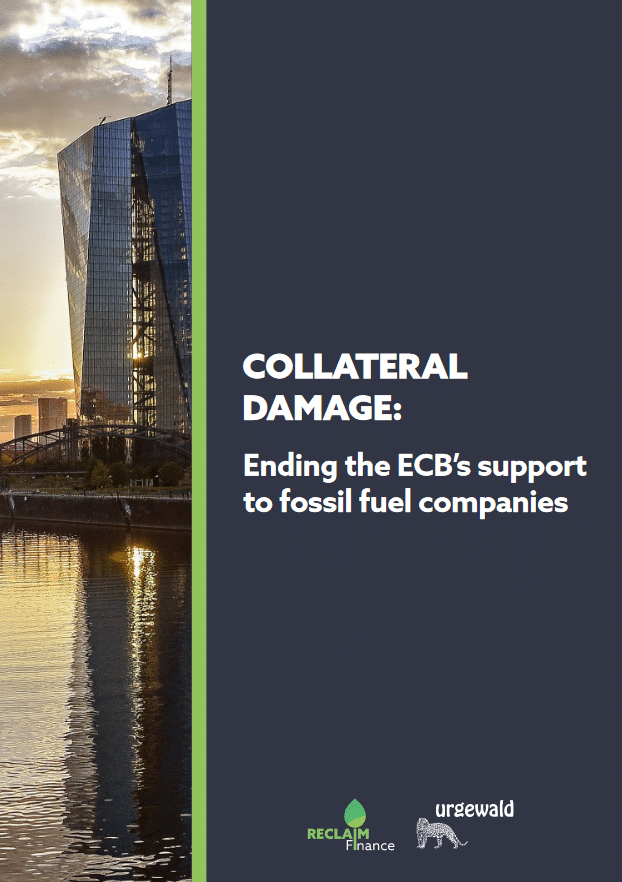
Collateral damage: Ending the ECB’s support to fossil fuel companies
Each day the ECB lists assets that can be used as collateral – guarantees that need to be pledged by banks seeking liquidity from the central bank – and set their value as such – their market value minus a discount rate, or haircut. In 2022, the ECB recognized the need to green the rules surrounding these lists, which is essential considering companies whose assets are listed benefit from easier access to financing. However, the ECB’s support to fossil fuel companies will persist without additional measures.
Key findings:
The Eurosystem allowed assets from
fossil fuel developers to be eligible for collateral.
- Between July and September 2023, and November 2023 and January 2024, the Eurosystem allowed assets from 32 fossil fuel developers to be eligible for collateral. In addition, the ECB accepted assets from two coal companies with no coal exit date, despite the IEA’s call to phase out coal.
- Fossil fuel companies are unlikely to be affected by the ECB’s plan to impose a limit on banks’ use of assets from high emitting companies. They will continue to benefit from their eligibility and will be able to circumvent the limit, notably through their financial subsidiaries – already all eligible assets from Repsol, BP, Glencore and Shell were issued by their financial subsidiaries.
- Eligible assets issued by fossil fuel companies are not systematically considered riskier than their counterparts despite the specific risks these companies are exposed to. On the contrary, haircuts went as low as 1% for assets from TotalEnergies and Shell, two companies exploring and developing new oil and gas fields.
To end its undue support to fossil fuel companies, the ECB should revise the Eurosystem collateral framework and introduce an exclusion of fossil fuel developers, starting with companies developing new oil and gas fields and/or coal mines. In addition, the ECB should adjust its haircuts to reflect the environmental damage and financial risks associated with fossil fuel activities for any remaining fossil fuel assets in its collateral pool.
